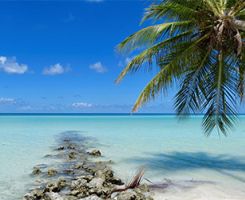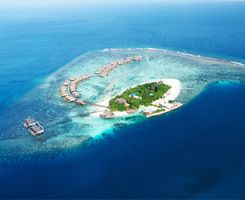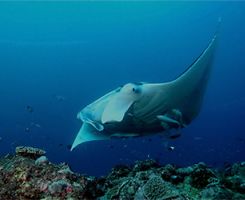- More More
- Blog
- Inspire me
- Groups
- Offers More
- Dive Courses More
- Liveaboards
More

Liveaboard Trips
On-board accommodation offering the opportunity to live right over the dive sites and to experience secluded dives...
Diving regions...
- LATEST AVAILABILITY BY REGION
- Red Sea availability
- Maldives availability
- Indonesian availability
- Socorro Mexico availability
- Galapagos availability
- ALL LIVEABOARD DIVING REGIONS
- Bahamas
- Bikini Atoll
- Caribbean
- Cocos Island
- Destinations
MoreDIVING REGIONS...
Our Top destinations....Why not try....
Find a trip
- Resort
- Liveaboard
North Maldives Atolls
Maldives Facts
Area: 298 sq. km
Population: 338,000
Language: Dhivehi, English
Time: GMT + 5
Electricity: 240v AC, 50Hz
Plugs: Mainly 3-pin UK style
The Northern Maldives Atolls offer a unique and less-explored diving experience. These pristine waters are home to thriving coral reefs, manta ray cleaning stations, and exhilarating drift dives. Heading north, you first come to the Baa, Raa, and Lhaviyani atolls - where you can dive from both liveaboards and resort bases.
Farther north still, Haa Alif, Haa Dhaalu, Shaviyani, and Noonu atolls are remote regions that offer exclusive diving opportunities, typically accessible via liveaboards. The Northern Atolls are famous for their diverse marine life, dramatic underwater landscapes, and incredible visibility.
Learning to dive
The Northern Maldives Atolls can offer an excellent environment for beginner divers, with calm, clear waters and shallow reefs, particularly in the Baa, Raa, and Lhaviyani Atolls. These islands have resorts that cater to beginners, providing PADI and SSI certification courses. The sheltered reefs and lagoons around these atolls are ideal for novice divers to gain experience while enjoying vibrant coral gardens and spotting tropical fish.
Many dive centres in this region offer a range of training options, including Discover Scuba Diving for those taking their first breaths underwater, and the full Open Water course. While certification fees can be higher in the Maldives than other locations, it's perfect for those looking to start their underwater adventure in a truly beautiful and relaxed environment.
Qualified divers
For certified divers, the Northern Maldives Atolls offer an exciting and diverse range of dive sites. The Baa, Raa, and Lhaviyani atolls boast spectacular underwater experiences. From thrilling drift dives along steep walls to exploring vibrant coral gardens teeming with life, this region has something for everyone. Many divers opt for liveaboard trips, especially between July and September, to fully explore the best dive sites across these atolls. Liveaboards give you access to a variety of dive environments, including manta ray cleaning stations, whale shark encounters, and beautiful coral reefs.
Further afield, the Far North Atolls - Haa Alif, Haa Dhaalu, Shaviyani, and Noonu - are more remote and offer some of the most untouched dive sites in the Maldives. With fewer visitors, the marine life here is abundant, and the dive sites are pristine. These atolls are primarily accessed via special liveaboard itineraries at certain times of year, which makes them ideal for experienced divers looking for a more adventurous and exclusive experience.
House reef diving
The northern Maldives offers some exceptional house reef diving, particularly around the resorts in Baa, Raa, and Lhaviyani atolls. These easily accessible reefs are perfect for divers who want to enjoy quick, relaxed dives directly from their resort or guesthouse. The house reefs in this region are vibrant with life, including colourful coral gardens, schools of reef fish, and occasional sightings of turtles and rays.
Lhaviyani Atoll is especially known for its diverse house reefs, where you can dive among sharks, manta rays, and large schools of pelagic fish right off the shore. These reefs are ideal for both day and night diving, with resident species like moray eels, lionfish, and octopuses providing fascinating encounters.
Boat diving
Boat diving is the main way to experience the incredible variety of dive sites in the Northern Maldives Atolls. Daily boat trips are offered by resorts for a small additional charge, taking divers to more remote reefs, manta ray cleaning stations, and exciting drift dive sites.
Baa Atoll, a UNESCO Biosphere Reserve, is famous for its manta ray aggregation, especially around Hanifaru Bay, which can be accessed via boat for snorkelling excursions. Similarly, Raa and Lhaviyani offer boat trips to deeper reefs and channels, where reef sharks and eagle rays glide through the nutrient-rich waters.
For those looking to explore beyond the near north, liveaboards are essential for accessing the Far North Atolls. Remote and often unvisited, the dive sites in Haa Alif, Haa Dhaalu, Shaviyani, and Noonu provide exhilarating diving experiences with pristine coral formations, untouched reefs, and plentiful marine life. Liveaboard trips in this region offer the flexibility to dive at several spectacular sites each day, ensuring you experience the full range of diving the northern atolls have to offer.
Dive sites
The Northern Maldives Atolls are home to some of the most captivating dive sites in the country. In the Near North Atolls, Baa Atoll stands out for its Hanifaru Bay, where from July to September, snorkellers can witness the incredible spectacle of manta ray and whale shark aggregations, and divers can dive outside the bay. Other dive sites, such as Dharavandhoo Thila and Maalhos House Reef, offer rich coral formations and a variety of marine life.
Lhaviyani Atoll is another highlight, known for its Kuredu Express dive site, famous for strong currents that attract reef sharks, tunas, and eagle rays. Nearby, Raa Atoll offers stunning coral gardens like Fushifaru Kandu, where divers can explore colourful coral walls teeming with tropical fish.
In the Far North Atolls, divers can explore less-travelled sites in Haa Alif and Haa Dhaalu. Sites like Maroha Kandu and Neykurendhoo Thila are virtually untouched, with pristine coral structures and encounters with pelagics, including barracudas, sharks, and manta rays. The remoteness of these dive sites makes them ideal for adventurous divers seeking an off-the-beaten-path experience.
Marine life
The Northern Maldives Atolls boast an extraordinary array of marine life, making it a haven for underwater enthusiasts.
Around Baa and Lhaviyani, divers can expect to encounter manta rays, particularly at cleaning stations and during their seasonal gatherings. Whale sharks are also spotted in the area, and the vibrant coral reefs are home to an abundance of tropical fish, including angelfish, parrotfish, and butterflyfish.
The Far North Atolls offer equally thrilling marine encounters. Here, divers often swim alongside reef sharks, eagle rays, and barracudas in the nutrient-rich waters. The remoteness of these atolls means that the reefs are relatively untouched, with healthy coral structures and a great diversity of marine species, including turtles, octopuses, and various species of nudibranchs. Occasional sightings of hammerhead sharks have also been reported in the deeper channels of the Far North Atolls, making it an exhilarating destination for advanced divers.
Diving conditions
Diving conditions in the Northern Maldives Atolls are generally excellent throughout the year, but the best time to dive depends on your goals. Particularly around Baa atoll, the most popular time for diving is between July and September, when the manta ray aggregation occurs in Hanifaru Bay. During this period, the south-west monsoon brings plankton-rich waters, attracting large numbers of manta rays and whale sharks.
Water temperatures in the northern atolls remain warm, averaging 26-29°C (79-84°F) year-round, making it ideal for divers. Visibility is usually fantastic, ranging from 15 to 30 metres, though it can drop during the monsoon season due to plankton blooms. Strong currents are common, especially at deeper channels, providing thrilling drift dives for more experienced divers.
The Far North Atolls, being more remote, offer excellent visibility throughout most of the year. However, liveaboard trips to this region are often planned during the calmer months between January and April, when conditions are at their best, with lighter currents and calm seas. The remoteness of these atolls also means that divers experience far less traffic and pristine dive sites, making it a great option for those seeking exclusivity.
The dive centre we use in the Northern Maldives Atolls is Ocean Fanatics, when staying at Reethi Beach Resort, and ProDivers Kuredu at Kuredu Resort & Spa. Further information, including dive packs and courses, is detailed at Reethi Beach Resort and Kuredu Resort & Spa.
Getting Around & Basic Information
Male airport is located on its own island. The airport island accommodates the main terminal, the seaplane port and the airport hotel (Hulhule Airport hotel). In the vast majority of cases, Male airport acts as the hub for all transfers between island resorts and atolls.
A narrow channel of water separates Male Airport Island from Male town, and a regular, inexpensive boat service operates between the two islands.
Once you're on your island resort, there's no ‘public’ transport to get around to other islands, you need to organise local excursions and join guided trips.
Twin-centre stays, in most cases, hub through the central point of Male to reach your next island.
Climate
This tropical climate has two monsoon seasons. November to May is the northwest monsoon season, which is dry and sunny. June to October is the southeast monsoon and brings the wet season. Having said this, the period crossover of the monsoon seasons fluctuates each year and even during the wet season, one may experience weeks of solid sunshine and just showers in short, sharp bursts.
Air temperature is stable around 28 - 30° C and the water temperature rarely drops below 25° C. Spectacular diving takes place all year round.
Currency
Local currency is the Maldives Rufiyaa (MVR).
Approximately £1 = 26 MVR
The tourist currency is US Dollar ($) or Euro (€). Island resorts charge in USD or Euros and bills can be settled with most internationally accepted credit cards at the end of your stay.
Time
The Maldives is +5 hours of GMT.
Inter Atoll Flights - Haa Alifu
Transfers to Haa-Alifu in the North involve an internal pressurised flight from Male. This is arranged and costed as part of your travel package to the north of the Maldives, unless otherwise requested.
Reethi Beach Resort
Exactly what we wanted
"The resort was exactly what we wanted: quiet and low-key with good diving"
John J
Reethi Beach Resort
Excellent Honeymoon - Out of this World!
"Out of this world.. Has actually ruined some subsequent holiday dives due to the high standards I now have. Nigel sorted everything out for the Wife and I, all I had to do was turn up on time, very relaxing and stress free.
We spent 5 (Water Villa) Nights on Reethi Island after 7 Nights on the MV Emperor Voyager in October/November 2016.
My Wife is a non-diver and not a confident snorkeler, so there was very little to do on-board, bar read and sunbathe (her idea of heaven).
Now onto the Important part, the diving, It was a bit of a rough crossing from North Male to North Arai, but absolute worth it we saw quite a number of Manta Rays and Devil Rays. A few of the dives even had us seeing Black tipped reef sharks (they didn't come to close to me :( ) and the night dive with the Nurse sharks was quite indescribable as they came closer than an arms length.
The currents were pretty strong in some areas so you need to be happy with a bit of current on your dives, I'd also advise a reef hook to be brought, some practice before going out there would also benefit, having never used one it took me a couple of dives to get used to it.
I'd also bring my own dsmb with 30m of line, the on-board ones only had 6m of line and you spent most dives doing a safety stop in the blue. I preferred to deploy deep and then come straight up on it. A couple of the best dives we managed to do the safety stop on the top of the Thila.
There was a large focus on Mantas which while nice was a bit much for me (I primarily dive wrecks) once we'd done a couple of cleaning stations I got a bit board as there was a lot of sitting about watching them swim in circles.
The dive guides were all very knowledgeable and approachable and dive briefs were short and to the point and had some excellent pictures of the dive area. The Crew were great all i had to do was put my wetsuit on, everything else was handled, such a difference from UK club diving.. :) Unfortunately we didn't get to see a whale shark even though we spent a few hours sailing up and down looking.
Small tip about Dubai Airport Terminal C is a good 20+ min from Terminal A (if you sprint it can be done in ~15 min, I know this for a fact) It also has all the same shops as Terminal A. So don't be like me and think, "I'll just stay in Terminal A until 15 min before the flight as all the shops are here".
Another tip is if you are going on to stay some extra nights on one of the Islands, then only do the water villa for 1 night and then spend the rest of the nights in the Standard apartments, you'll get 1 or two extra nights for the cost saving and almost no change in quality. Ironically even though the villas are over the water the std / deluxe apartments have better access to the water, the ladder (yes ladder) from the water villa is quite steep and slippy whereas the apartments are about 10-20 yards from the water.
Big thanks again to Nigel for making it all happen.""
Ryan - Northern Ireland
Reethi Beach Resort
Reethi Beach is Stunningly Beautiful and Was Perfect
"We had a lovely holiday - Reethi Beach is stunningly beautiful and was perfect. Very relaxed - staff all wonderful and I could not find a single thing that we would change or needs commenting on. They very kindly upgraded us to Water Villas on arrival so a very lovely surprise and we really enjoyed the experience.
Qatar Airways are a fantastic airline to fly with and although I wanted to fly direct I would not have missed the experience of visiting Hamad Int Airport at DOHA. Has to be seen to be believed!!!!
The House reef at Reethi is lovely and I saw Turtles and Octopus nearly every day and teeming with fish. So thank you once again. Everything worked perfectly."
Kim Scaglioni - UK
North Maldives Atolls Accommodation
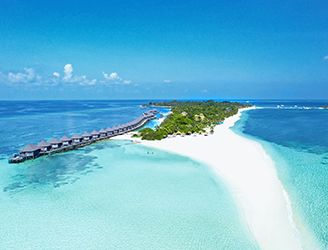
Kuredu Resort & Spa
from £1945
Kuredu Resort & Spa is one of the most popular with something for every guest from budget friendly Garden Bungalows to...
VIEW DETAILS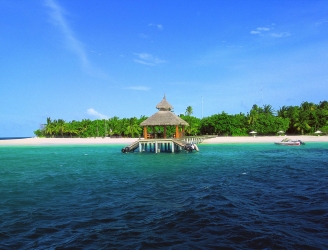
Reethi Beach Resort
from £2375
Located on the Baa atoll, Reethi Beach offers elegant accommodation in a beautiful setting. The island combines high stand...
VIEW DETAILS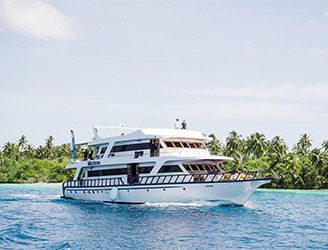
Mariana
from £1333
With the right blend of modern and traditional, this newly renovated vessel offers a superb diving home for guests to expl...
VIEW DETAILS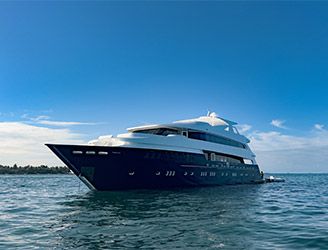
Seascape
from £1476
Launched in 2023, this exceptional liveaboard combines luxury and sustainability, with itineraries ranging from 7 to 14 ni...
VIEW DETAILS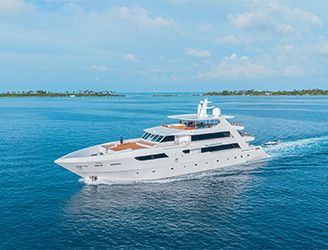
Maldives Master
from £1510
The versatile Maldives Master is a modern, spacious, and comfortable liveaboard. The vessel and supporting Dhoni cruise th...
VIEW DETAILS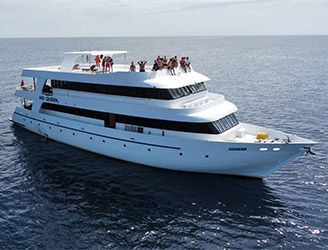
MV Ari Queen
from £1495
Ari Queen, is a 'basic' standard liveaboard. Offering great diving, this boat comfortably accommodates up to 20 divers in...
VIEW DETAILSMV Carpe Diem
from £1532
This beautiful & spacious 35m liveaboard accommodates up to 20 guests. The boat has four decks including a partially s...
VIEW DETAILS
Amba
from £1947
Amba offers divers a comfortable journey as she cruises the Maldives visiting the central & southern atolls & spec...
VIEW DETAILS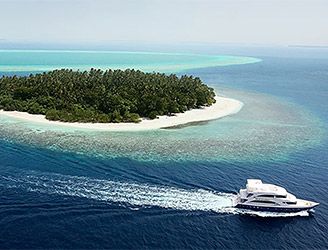
M/V Emperor Voyager
from £1356
M/V Emperor Voyager sails from Male & is a modern, spacious liveaboard built to a high standard, accommodating 20 gues...
VIEW DETAILS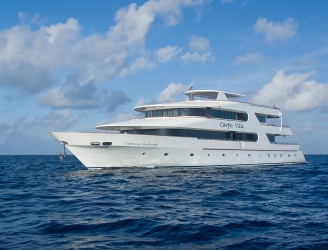
MV Carpe Vita
from £1624
M/V Carpe Vita is a luxury 38m motor safari yacht and the sister vessel of the M/V Carpe Diem. She has a total of 10 cabin...
VIEW DETAILS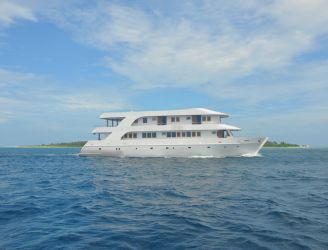
MV Keana
from £1761
MV Keana is a new 31m vessel built specifically for diving by a very experienced team. She offers high standards of comfor...
VIEW DETAILS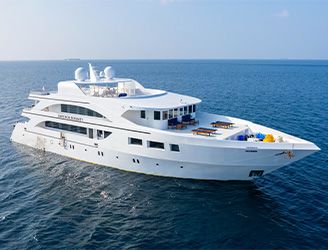
M/V Emperor Serenity
from £1631
M/V Emperor Serenity sails from Male & is a spacious liveaboard built to a high standard, accommodating a maximum of 2...
VIEW DETAILS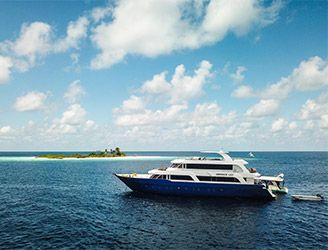
M/V Emperor Leo
from £1449
Built to a high standard for today's discerning diver, M/V Emperor Leo offers good comfort and is an ‘excellent value’...
VIEW DETAILS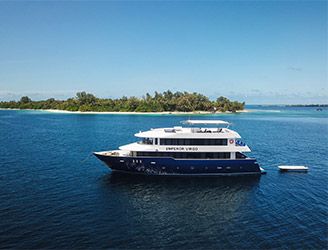
Emperor Virgo
from £1449
M/V Emperor Virgo is ideal for groups, as she accommodates a maximum of 18 divers in lower and upper deck twin or double c...
VIEW DETAILS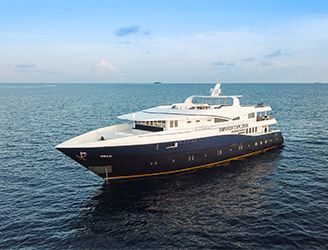
M/V Emperor Explorer
from £1569
The stunning Emperor Explorer blends exceptional diving with on-board luxury for discerning divers. She accommodates 26 di...
VIEW DETAILS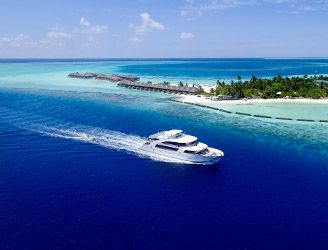
Carpe Novo
from £1729
Spacious and luxurious, this vessel brings you the best of the Maldives and offers some special itineraries in style and c...
VIEW DETAILS














